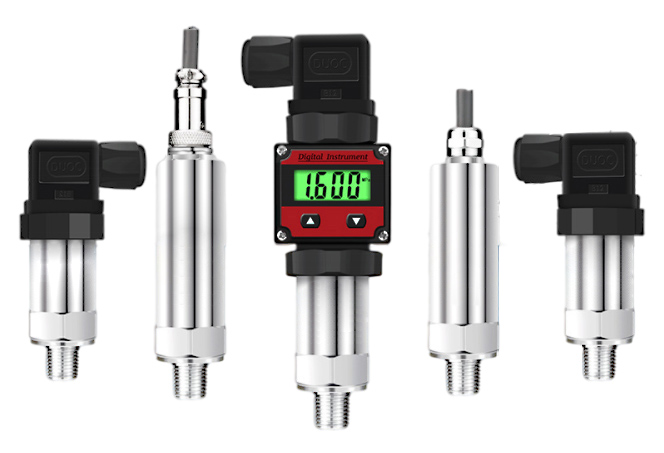
Dealing with different variables, whether physical or environmental, is a normal part of any pressure instrumentation application. Decisions must be made regarding protection from outside environmental elements such as water, dust, extreme heat or cold. Though the list of different variables can be long and lengthy, ATO offers a brief overview of some of the more common considerations when choosing pressure sensor for your application.
- Temperature
Extreme temperatures, whether hot or cold, are often associated with dusty/dirty environments. Electronics and bonding materials used in components are affected by temperature. Prolonged exposure in extreme temperatures beyond the operating temperature specification and in areas where the sensor does not have the proper IP or NEMA rating, will drastically reduce the life expectancy of your sensor.
- Specific gravity
Knowing the specific gravity (density of media to be measured) is vital for correct sensor calibration and output calibration for your control system. The specific gravity of liquids and gases can change if their temperatures change. Be aware of any changes so your sensor will be calibrated correctly.
- Barometer pressure
In pressure sensors with a sealed gauge reference, and in low-pressure ranges (less than 100 PSI), beware of changes in the barometric pressure of the environment. This can cause an offset beyond the specified accuracy of your sensor. At pressures greater than 100 PSI, the offset is nominal and not as great a factor.
- Chemical compatibility
Pressure sensors are often installed in corrosive environments. A corrosive environment may include gaseous contaminants like ammonia, hydrochloric and sulfuric acids to name a few.
Corrosive chemicals usually attack instrumentation through plumbing leaks, fumes and vapors. Electronics and wiring may corrode and lead to instrument failure and loss of output information. Exterior housing and any electronics must be protected from chemical exposure. Proper chemical compatibility of the sensor is crucial.
- Vibration
Heavy duty industrial applications of pressure sensor are often associated with high vibrations. A pressure transducer under extreme vibration can actually fall apart from the inside out if it lacks protection. Vibration protection usually includes securing the electronics of the sensor with an epoxy to prevent physical breakdown. This additional step is only taken when needed, as it makes servicing the sensor more difficult for the factory.
